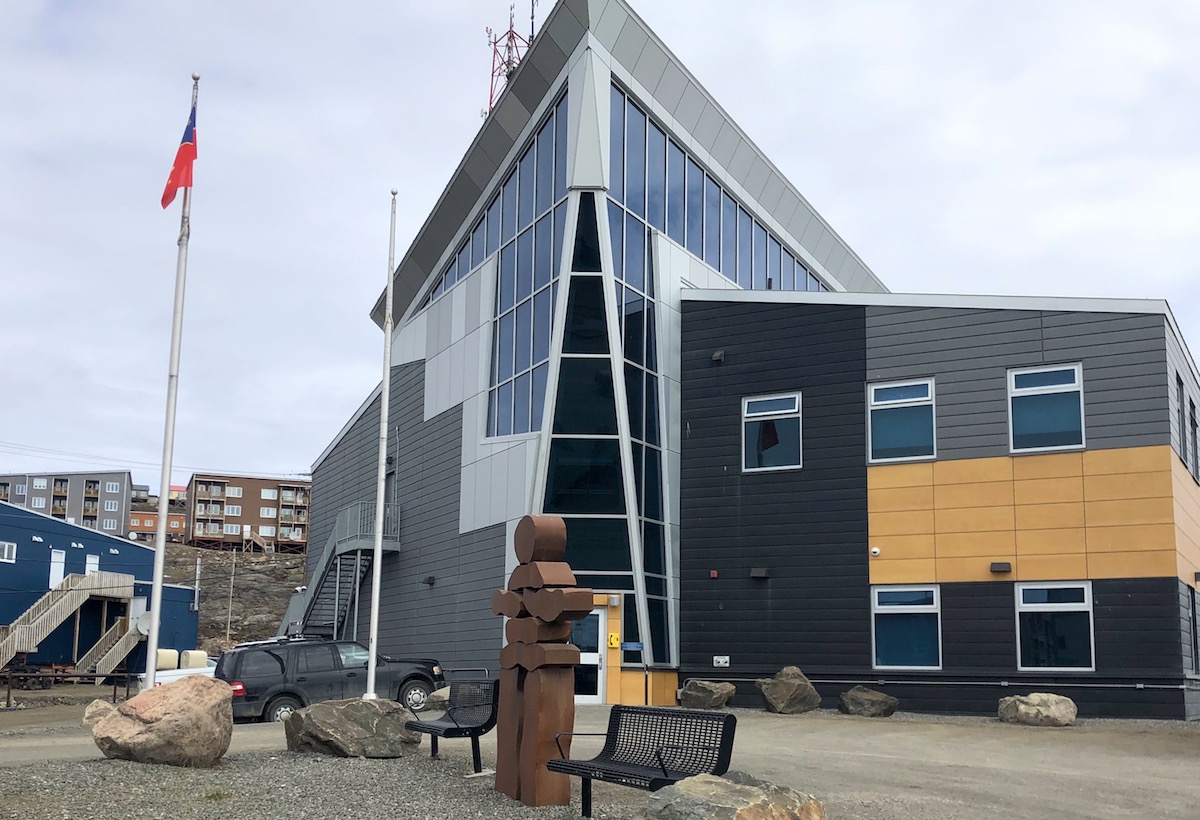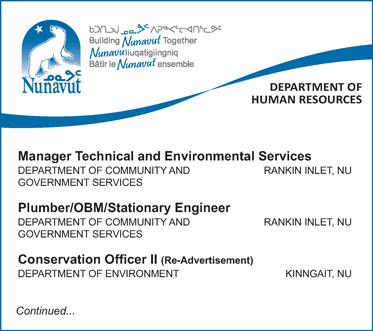Nunavut RCMP neither documenting, nor following guidelines around strip searches: report
Iqaluit members said that they did not consider the act of stripping a prisoner of their clothing for safety or self-harm reasons as being a strip search, and would not document the event
A new review of RCMP practices has found that officers at the force’s Iqaluit detachment do not always follow RCMP policy when they conduct cell block searches or strip searches of Nunavut detainees. (File photo)
A new review of RCMP practices has found that officers at the force’s Iqaluit detachment are not always following RCMP policy when they conduct cell block searches or strip searches of Nunavut detainees.
The independent Civilian Review and Complaints Commission for the RCMP released the report, called Systemic Review of the RCMP’s Policies and Procedures regarding Strip Searches, on Oct. 1. It’s an analysis of the force’s practices at seven different detachments across the country, including V Division in Nunavut.
Across the country, the commission found that the RCMP’s national personal search policy was generally unclear. The report found inadequate documentation of those searches, a lack of after-hours supervision of RCMP members and insufficient training, as well as issues with the ongoing removal of prisoners’ undergarments.
The report noted those issues as “significant” at RCMP’s Iqaluit detachment.
“Members do not have adequate knowledge of the strip search policy and appear to lack guidance from supervisors,” the report said.
Although the review focussed on the Iqaluit detachment, the commission said it appeared to be reflective of practices across the territory.
“Members do not document or properly articulate their grounds for conducting a strip search, and there does not appear to be any supervisory file review for compliance with the RCMP’s strip search policy,” said the report.
This latest review stems from a landmark Supreme Court of Canada 2001 decision, R v. Golden, that defined strip searches as “inherently humiliating and degrading,” though justified in certain circumstances. The court urged clearer policies, training and better supervision for officers.
For example, courts have established that the police practice of removing or ordering the removal of a prisoner’s undergarments, like a bra, constitutes a strip search and, when conducted on a routine basis, is unreasonable and contravenes a detainee’s Charter rights.
When the commission reviewed 162 occurrence reports from the Iqaluit detachment, 158 of them referenced the removal of a prisoner’s bra or underwear, but only three per cent of files documented the actual search.
According to interviews with Iqaluit officers, if a detainee refuses to remove their clothing, the members would cut it off. The rationale for removing a prisoner’s bra, members said, would be to prevent prisoners from using the bra to hang themselves.
Members said that they did not consider the act of stripping a prisoner of their clothing for safety or self-harm reasons as being a strip search and, as such, would not document the event.
Iqaluit-based officers also said the individuals who are subject to strip searches are often intoxicated.
The report made a couple of Nunavut-specific recommendations. One is that the RCMP provide “operational guidance” and trauma-informed training to members around how to handle vulnerable persons who are detained, as it relates to mental health and self-harm.
The commission also learned that all strip searches at the Iqaluit RCMP detachment are conducted in cells and video-recorded. Members there said that they record strip searches to protect themselves from false allegations.
But the report found that the practice of videotaping strip searches can and does raise privacy issues if the detainee is recorded in a state of undress.
The commission recommended that the RCMP provide clearer direction to its divisions around the use of closed-circuit video equipment, so police do not infringe on the Charter rights of the person being searched.






I’m a little puzzled, this article is saying the ordering the removal of a bra, even if still wearing a shirt, is considered a strip search?
.
In the big picture, there really seems to be a lot of hypocrisy on the side of women about their bodies. It’s been almost 25 years since the Ontario Court of Appeal overturned the conviction of Gwen Jacobs for going bare-chested in public, stating “there was nothing degrading or dehumanizing in” taking off her top, and yet if I understand this article correctly, having a woman remove her bra from under her shirt is considered “inherently humiliating and degrading”.
You really don’t see the difference between someone choosing to take their clothes off and the state forcing someone to take their clothes off? Are you genuinely that stupid, or are you just choosing to be?
I see a difference between choosing to and being forced to, however I don’t see how a woman having to take her bra off while keeping her shirt on constitutes a strip search.
When a person is suicidal, and intoxicated, a bra, a pair of underwear or socks become the only tools left for the person to kill them self, that is why a suicidal gown is put on and garments are removed. Common sense. The RCMP do what they should to save people from self harm. If the liquor was removed there would be a big change in the number of people that would have suicidal thoughts and act on them . People should be thanking RCMP for saving so many from actually doing it. It’s easier to blame others than fix the problem. Too bad the ones that feel the removal of their clothes is not right could watch themselves on video. Really see how they behave when intoxicated and suicidal. By morning it’s all a blur I’m sure.
Yes, such people should be kept safe from self-harm. However they should also be safe from police who don’t even know what their own procedures are, or from police who know and do things to them anyways. Being subjected to such things is also something that affects their mental well-being and willingness to self-harm.
”
There are stories of the RCMP keeping people in detention for a whole day without notifying anyone in their family about their detentions or arrests, which only increases anxiety for their detainees and their families. In such contexts the RCMP were blatantly ignoring or ignorant of their own procedures.
”
If we want to help people in vulnerable situations, the police need to do things by the book and with proper documentation of what happens. This is essential to proper care and detention of vulnerable people likely to self-harm.
”
What is “too bad” is that the police are stripping people on camera when they shouldn’t be, not that those having it done to them aren’t forced by the police to watch it afterwards… that suggestion is a bad idea for any potentially suicidal people trying to get their minds right. Shaming people is not the answer to any potential suicidal thoughts.